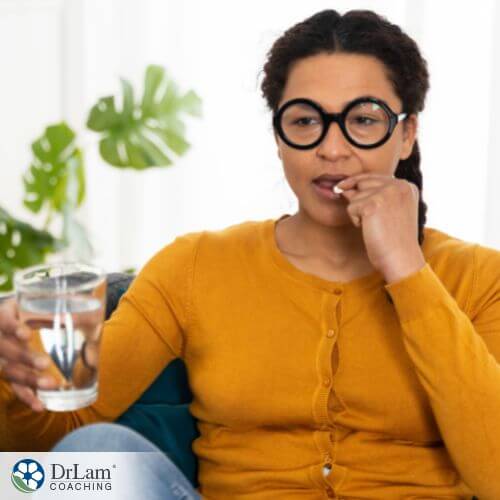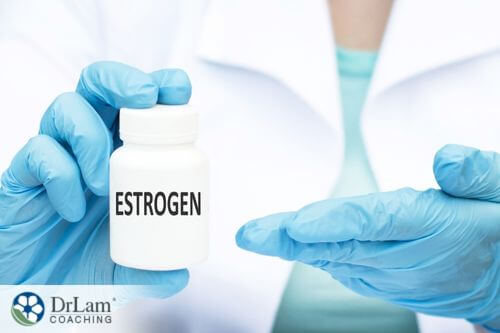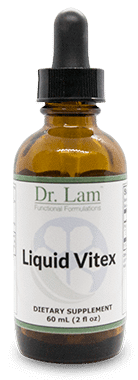 Menopause marks a transition period in a woman’s life. As you reach menopause, your body stops releasing eggs for fertilization. In other words, you can no longer become pregnant. But menopause also comes with a variety of symptoms. These symptoms, relating to hormone fluctuations, include vaginal dryness, mood swings, and hot flashes. Conventional medicine often suggests hormone therapy as a means of addressing these menopausal symptoms.
Menopause marks a transition period in a woman’s life. As you reach menopause, your body stops releasing eggs for fertilization. In other words, you can no longer become pregnant. But menopause also comes with a variety of symptoms. These symptoms, relating to hormone fluctuations, include vaginal dryness, mood swings, and hot flashes. Conventional medicine often suggests hormone therapy as a means of addressing these menopausal symptoms.
Supplementing with hormones that your body has a shortage of may seem to be the perfect solution to hormone imbalances. But while these hormones may ease symptoms, there are also side effects and risks.
Before addressing these risks, we first need to understand hormones, what they do, and what affects them.
Also, note there are key differences between perimenopause, menopause, and postmenopause:
For this article, we use the generic term menopause to refer to all three of these periods, unless otherwise stated.
Hormones are chemical messengers. Once in your blood, they travel to various parts of the body where they fulfill many functions. Your body makes many diverse types of hormones, each with its own particular set of functions. Estrogen, the female sex hormone, is one such example.
Stress is the one of the main causes of hormone imbalance aside from menopause. This imbalance and the associated symptoms are very similar to the estrogen imbalance resulting from menopause in women. Common menopausal symptoms resulting from an estrogen imbalance include the following.
Common hormone-related sleep issues encountered by those going through menopause may include:
Many women may develop metabolic issues resulting from a hormone imbalance. These include:
Besides these, you may also see a change in your eating patterns. You may eat more because you do not get a feeling of satiety. This is because your hunger and satiety signals may be turned off due to a hormone imbalance. You may constantly feel hungry.
In addition to sleep and metabolic issues, hormone imbalances and changes can result in:
In the majority of menopausal women, these symptoms tend to ease up or disappear after reaching postmenopause.
We often refer to hormone therapy as hormone replacement therapy (HRT). With hormone therapy, you would take medications containing either estrogen or a combination of estrogen and progesterone. This increases your body’s hormone levels and helps address the symptoms associated with menopause.
But while this therapy has some benefits, it comes with some risks as well. We will look at these in-depth later.
 The two main types of hormone therapy are estrogen therapy and estrogen-progesterone therapy.
The two main types of hormone therapy are estrogen therapy and estrogen-progesterone therapy.
With estrogen therapy, you take only estrogen. Typically, this starts with a low estrogen dosage, usually in the form of a tablet. It's usually best to take the lowest dose possible. It may help ease menopausal symptoms and help prevent osteoporosis. Estrogen is also available as a spray, gel, cream, or vaginal ring.
Estrogen-progesterone therapy, also referred to as combination hormone therapy, is where both estrogen and progesterone are used. The progesterone in this therapy is often progestin when going to see a conventional doctor. Progestin is a synthetic form of progesterone. However bioidentical hormone therapy allows for you to be ablet o use natural forms of hormones that look exactly like the hormones you make in your own body.
Healthcare practitioners usually suggest combined hormone therapy for women who still have their uterus and estrogen therapy for women who have had a hysterectomy. Estrogen-only therapy increases the risk of uterine cancer, although women who have had a complete hysterectomy do not have this risk. However, for ultimate balance, it's still good to do combined therapy even if you don't have a uterus. Keep in mind though that combined hormone therapy may cause your menstrual period to start again.
While no current limit exists on the length of hormone therapy, most healthcare professionals suggest you should stop taking additional hormones once you reach postmenopause, or when you no longer have menopausal symptoms.
There are several different ways hormone therapy is delivered.
The most common form, tablets, comes in an estrogen-only or combined form.
There are also estrogen-only or combined hormone therapy patches. You would put this patch somewhere on your abdomen daily. These patches also help avoid some of the side effects common with taking hormone tablets and do not increase your blood clot risk.
You could also consider an estrogen gel or cream. You rub this gel or cream into your skin once per day. It also reduces your blood clot risk. If you have not had a hysterectomy, you may still need to take progesterone, however.
Many women opt for implants. These small, pellet-like implants inserted under your skin gradually release estrogen. You need to replace them every few months, though. You may also need to take progesterone separately.
Besides tablets, you could also consider an intrauterine system that, once inserted into the womb, slowly releases progesterone while acting like a contraceptive.
Estrogen is also available as a ring, or pessary. Placed inside the vagina, they may help ease vaginal dryness. They will not, however, help relieve hot flashes or other menopausal issues.
Lastly, sequential or cyclical hormone therapy. This type of therapy is often advised for women who, although showing menopausal symptoms, still have periods. You can opt for either the monthly or trimonthly options. The monthly option sees you take estrogen daily while taking progesterone concurrently for only the first fourteen days of your cycle. The three-month option also recommends a daily estrogen intake but only taking progesterone concurrently for fourteen days of every three-month cycle. Healthcare professionals typically advise the first option for women with regular periods, and the second for women with irregular periods although they still have at least one period within the three-month cycle.
Healthcare providers may advise postmenopausal women to follow a continuous combined hormone therapy protocol. Here she would take either estrogen or an estrogen-progestogen combination each day without any breaks.
 Conventional hormone replacement therapy may help relieve many of the symptoms associated with menopause. It may, for example:
Conventional hormone replacement therapy may help relieve many of the symptoms associated with menopause. It may, for example:
Despite its benefits, hormone therapy may increase your risk of the following conditions:
You should refrain from using hormone replacement therapy if you have, or have a family history, of the following:
Taking hormones may exacerbate your risk of these health issues.
Hormone therapy also has possible side effects. These include:
If you experience any of these symptoms after starting with this therapy, please talk to your healthcare provider as soon as possible. They may help you navigate these conditions and provide possible alternatives.
Conventional medicine makes use of hormones made from the urine of pregnant horses and manufactured hormones. Bioidentical hormone therapy, on the other hand, makes use of 100% natural hormones from plant sources. These hormones are chemically identical to those produced by the human body.
BHRT has the same benefits as traditional, non-bioidentical hormone therapy. It may, however, be a safer option than traditional hormone therapy because the hormones used are identical to those produced by the human body. According to the literature, it may also help prevent cataract formation in the eyes and improve the hydration, elasticity, and thickness of your skin. It may also reduce wrinkles.
Furthermore, for people with cancer who may have undergone therapies that lower estrogen levels, bioidentical hormone therapy may not only improve their hormone levels but improve their quality of life. These people may also find relief from symptoms resulting from their care plans like insomnia, a lower sex drive, migraines, and incontinence.
As with conventional hormone replacements, bioidentical hormones also come in different forms. The most common ones include:
Not everyone wishes to undergo hormone therapy. Luckily, there are many other ways to manage the symptoms of this time of life.
Stress can contribute to the symptoms associated with menopause. It affects the Hormone circuit NeuroEndoMetabolic (NEM) Stress Response, which is the way your body reacts to stress. The NEM stress response affects your body in many different ways, and the hormone circuit is one part of it, which includes the adrenals, thyroid, and reproductive organs. Reducing stress helps address some of the hormonal and mental health issues women face. If you continue to have chronic stress, it can affect your adrenals and ultimately lead to adrenal fatigue. Once you hit menopause, the only organ that is producing the majority of estrogen and progesterone is from the adrenals, so you want to make sure the adrenals are healthy. If you cannot get rid of your stressor, you can learn to manage it. This may mean reducing the time spent with stressful people or in stressful situations. This is a factor because, after menopause, your adrenal glands become your primary estrogen source. Supporting adrenal health may thus help with the symptoms of menopause.
 Exercise promotes the production of beneficial hormones that may help reduce your stress load. But instead of focusing on stressful exercise forms such as marathon training, opt for something gentler. Swimming, yoga, tai chi, weight-bearing exercises, and even a brisk walk will help strengthen muscles and promote bone health.
Exercise promotes the production of beneficial hormones that may help reduce your stress load. But instead of focusing on stressful exercise forms such as marathon training, opt for something gentler. Swimming, yoga, tai chi, weight-bearing exercises, and even a brisk walk will help strengthen muscles and promote bone health.
Certain foods mimic estrogen hormones. These include soy foods like tofu. Leafy greens like cabbage, broccoli, Brussel sprouts, and cauliflower also help your body metabolize estrogen. Also, cut down on your sugar, caffeine, and processed foods intake while eating plenty of organic fresh fruits and vegetables. Opt for lean meat, poultry, and fatty fish options for protein. These healthy food choices provide your body with the vitamins, minerals, and nutrients it needs to work at an optimum level.
The various B vitamins, as well as vitamins E and D all help to address the symptoms associated with menopause. The B vitamins, for example, help with energy regulation while promoting new cell growth. One of them, folic acid, may also help with hot flashes. Vitamin E may help address oxidative stress and vitamin D helps with calcium absorption, promotes healthy bone structure, and may improve vaginal dryness.
You could also look at using herbal supplements like St. John’s Wort, black cohosh, milk thistle, sage, or chaste tree, to name a few. Various herbs address menopausal symptoms. Some may even play a hormone-balancing role.
When considering supplements of any kind, please first talk to your healthcare practitioner. They are best able to determine its efficacy and dosage, taking your health history into account. Remember, some herbs may interact with certain medications or could exacerbate certain health issues.
Hormone therapies may help address the various symptoms of menopause. However, they do not come without risk. When considering this type of therapy, do also look into bioidentical hormone replacement therapy as well as other, natural options.
If you would like to know more about hormone therapy, the team at Dr. Lam Coaching can help. We offer a free** no-obligation phone consultation at +1 (626) 571-1234 where we will privately discuss your concerns. You can also send us a question through our Ask The Doctor system by clicking here.

Menopause in Sync: Liquid Vitex for Natural Hormone Harmony
Hormone therapy does have some risks involved. It may increase your risk of certain cancers, blot clots, and stroke, along with other risks. Taking combined hormones or bioidentical hormones may lower some of these risks, as could using different delivery methods of hormones. But it is important to talk to your doctor and do your research before embarking on this therapy.